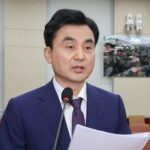The semiconductor factory (fab) that Taiwan Semiconductor Manufacturing Company (TSMC) is building in Arizona is a centerpiece of President Joe Biden’s CHIPS Act. The president has allocated $52.7 billion in subsidies solely to the semiconductor industry under this legislation, a significant portion of which is flowing to TSMC.
However, this factory, which should be the spearhead of U.S. semiconductor independence, has been struggling from the start. Its completion date has been continuously delayed, and it now looks like it won’t be able to start mass production until 2025. Why is the U.S., which boasts the world’s top semiconductor technology and industry scale, having trouble with just one fab?
The U.S., the world’s leading semiconductor country, has a line of customers

The problem is certainly not a lack of technology, equipment, or demand. The U.S. remains the country with the world’s number one semiconductor industry, and the majority of semiconductor-related patents and technologies are based in the U.S.
TSMC, the world’s largest dedicated independent semiconductor foundry, also owns the most EUV lithography equipment from ASML, and the U.S. is home to Applied Materials (AMAT), the world’s largest semiconductor production equipment company. Thus, there are no concerns about the supply chain of parts.
Moreover, American companies are eagerly awaiting the opening of the Arizona fab. Big players in semiconductor design, like Apple and AMD, have already declared their intent to supply the TSMC U.S. branch.
What the U.S. lacks is not semiconductor technology, but general industry talent

The problem is not advanced semiconductor equipment or technology; it’s the factory itself. TSMC Chairman Mark Liu acknowledged during a conference call for Q2 performance results that “the Arizona factory is having difficulties in construction due to a shortage of skilled workers.”
When discussing semiconductor fabs, the most attention is usually given to special equipment for semiconductor production, such as EUV lithography devices. These devices cost billions of dollars each, and the number of companies that can manufacture them is limited, leading to constant supply anxiety.
However, ‘general industry’ is just as important in the construction of a fab. For example, today’s fabs are filled with small rails to transport FOUPs (special containers for storing and moving wafers).

Robotic equipment used to adjust the position of semiconductors and package them must move to precisely specified locations without a single inch of error. To implement this work reliably, ultra-precision electric motors and sensors for joints are needed.
Meanwhile, the interior of the facility must always be clean, as even the tiniest dust particle can affect production yield. Therefore, devices for stably supplying ultra-pure water and special pipes for gas flow are abundant inside the fab. Not only that, but power supply devices are also arranged redundantly, as pausing the fab even once would require restarting the entire process.
Thus, equipment invested in fabs is not limited to the semiconductor industry. They require machinery, electrical/electronic, and chemical industry-specific equipment, and experts from each industry who can manage and handle this diverse supply chain. In other words, managing a semiconductor fab is closer to general industry technology than semiconductor technology.
What the U.S. lacks is not semiconductor engineers. If we were to judge by semiconductor technology alone, the U.S. would be the unrivaled world leader. However, compared to ‘fab powerhouses’ like Taiwan, South Korea, and China, the U.S. is significantly lacking in general industry technicians with experience working in semiconductor facilities. This is why Liu, TSMC’s chairman, has resorted to deploying 600 of the company’s engineers from Taiwan to the Arizona fab.
Morris Chang, ‘Father of Taiwan’s Semiconductor Industry,’ foresaw the situation a year ago

This problem was already anticipated by Morris Chang, the founder of TSMC and the so-called ‘Father of Taiwan’s Semiconductor Industry.’ Last year, he harshly criticized the Biden administration’s efforts to strengthen semiconductor manufacturing capabilities in an interview with U.S. media, calling it a “wasted effort.” He pointed out the “serious shortage of manpower and high labor costs” as reasons.
Chang also predicted that the U.S.’s narrow industrial talent pool would increase the overall cost of fab construction. The former chairman said, “It costs 50% more to manufacture semiconductors in the U.S. than in Taiwan,” and called the construction of foundries in the U.S. a “waste.”
Even if the Arizona fab opens in 2025 and starts mass production, the problems will continue. For TSMC to make a profit from the U.S. fab, it would have to pass the initial investment costs onto its customers. This means that the price per chip from the U.S. TSMC would have to be higher than that of the TSMC in Taiwan or Japan, thereby weakening the price competitiveness of American electronic products.
In the end, for the U.S. TSMC to stabilize its yield and secure the human and material foundations to maintain the fab in the long term, the U.S. government will have to continue providing support.
However, maintaining a fab is by no means cheap. More than $30 billion has already been invested in the construction of the Arizona fab, and more money will be needed to introduce new equipment and improve the factory in the future. It’s unclear whether the Biden administration, and any subsequent administrations that inherit power, will be able to continue writing blank checks to TSMC until the long-cherished wish of ‘U.S. semiconductor independence’ is achieved.
While it’s clear that the U.S. still has the world’s number one semiconductor industry, it remains a question mark whether the decision to bring back ‘chip production,’ which has long been globalized, to the U.S. was a wise strategy.















Most Commented